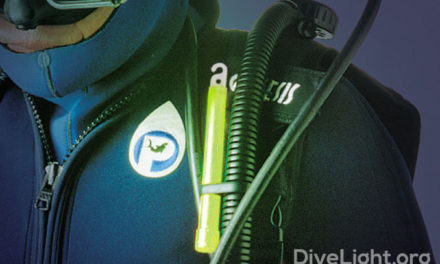When your diving adventure takes you to the darker parts of the water, you need a source of light, and there are endless types and styles of dive lights on the market today. No matter what type of dive light you choose, you will need one light as a primary light, and the other as a secondary light.
Primary dive light
These are the largest types of dive light. The primary dive lights provides enough illumination to dive without any other light source, acting as the main source of light. However, a backup light is suggested for almost every diver.
Secondary dive light
These are the backup lights. They are often small, handheld lights that are put to use in the event the primary light fails. The lights also provide extra illumination that is essential to maneuver around reefs.
Primary and secondary dive lights come in a variety of styles, including wrist and head mounted options, canister lights, and video lights.
Wrist and head mount lights
If you are diving for an activity that will require the dedicated use of both of your hands, these are the lights for you. The lights are mounted on the head and/or wrist, allowing both hands to be free.
Canister lights
The lights are often referred to as can lights. Can lights are often used by technical divers. They have separate battery packs and are connected to the bulb by a long wire. The bulb can then be connected to your hand or wrist.
Video lights
These lights are commonly used by videographers. The lights emit a constant beam of light that is ideal for capturing a video while underwater. Some of the lights have mounting points that are used to ensure the light is constant and steady.
The choice of dive light depends on how you plan to use it. It is important to have the right lighting equipment that matches the task that is to be executed under water. There are other types of light, but these are some of the main types that serve the average diver.




